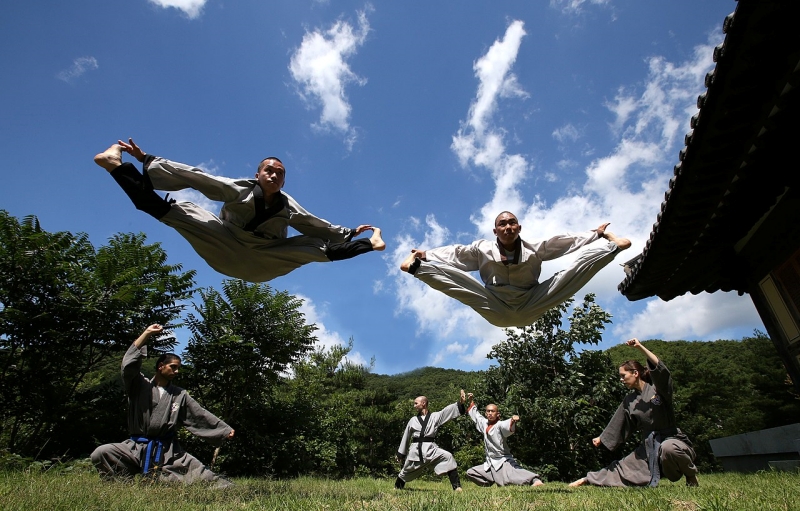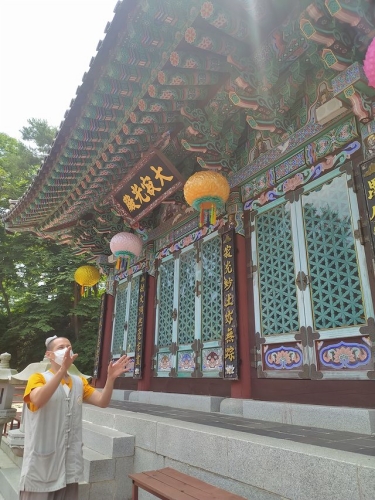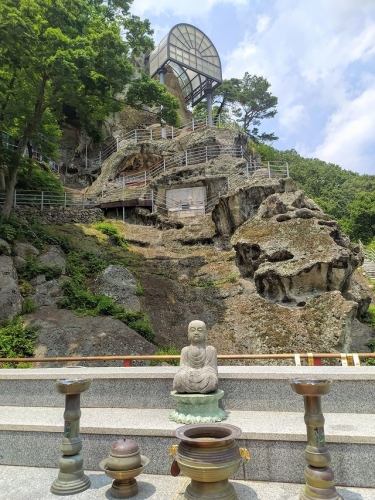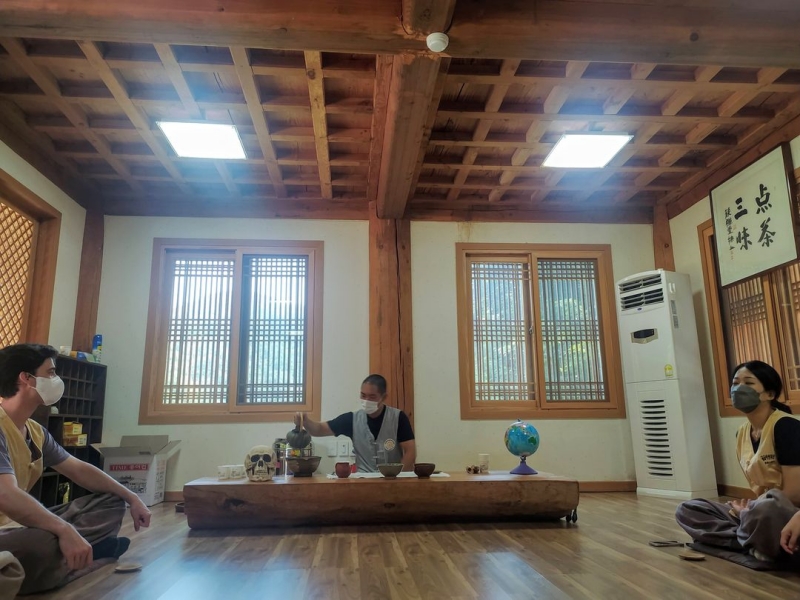- 한국어
- English
- 日本語
- 中文
- العربية
- Español
- Français
- Deutsch
- Pусский
- Tiếng Việt
- Indonesian
By Honorary Reporters Laura Lopez Velazquez from Mexico and Kelly Nicolle Medina from Colombia
Photos = Kelly Nicolle Medina
Among the dozens of martial arts in Korea, sunmudo (seonmudo) has been practiced at Buddhist temples in Korea. The name literally means "meditative martial art" and combines spiritual elements such as meditation, yoga and qigong with dynamic striking and defensive techniques.

Sunmudo incorporates Buddhist elements like meditation in a dynamic martial art.
History
For many years, Buddhist monks agreed to keep the style secret to prevent it from getting corrupted, thus sunmudo is far less known than other Korean martial arts such as taekwondo and hapkido. Not many Koreans are aware of the Buddhist style.

Golgulsa Temple is considered the home of sunmudo.
In the 1930s and 40s, this ancient style was revived at the rebuilt Beomeosa Temple in Busan, becoming a covert center of resistance against Japanese occupation. The monk Yang-ik systematized the techniques and in 1980, Grandmaster Jeog-un presented sunmudo to the public for the first time. Later in 1990, he designated Golgulsa Temple as the headquarters of the World Sunmudo Association.
Training and structure
Sunmudo can be performed by anyone regardless of age, gender or physical ability. The first of its two parts is calm training in the morning of sitting meditation, seon (meditative) yoga and qigong. The second is dynamic training at night comprising gymnastics and martial arts. The highest rank in the art is fifth dan (degree), which takes 11-12 years of training. Those who have practiced sunmudo say they reached a higher mental state by harmonizing the mind, body and breath.
Though Korea has more than 20 sunmudo studios, Golgulsa Temple in Gyeongju, Gyeongsangbuk-do Province, is considered the home of the martial art. People can attend weekend or monthly training sessions in the martial art as well as Buddhist temple etiquette.

Golgulsa Temple
Training at the temple is rigorous and from 4 a.m., everyone meditates for an hour. At 6 a.m., they jog or walk and at 7 a.m., they eat breakfast. Training during the day includes a tea ceremony, practice in royal sunmudo, meditation, breathing and stretching, and sweeping and cleaning the temple. Sometimes at 3 p.m., monks give a martial arts demonstration. At 9 p.m., it's lights out.

Drinking tea with a monk in Golgulsa
Previously, only visitors devoted to Buddhism and martial arts masters were allowed to train in sunmudo, but it is now open to the public.
kalhong617@korea.kr
*This article is written by a Korea.net Honorary Reporter. Our group of Honorary Reporters are from all around the world, and they share with Korea.net their love and passion for all things Korean.